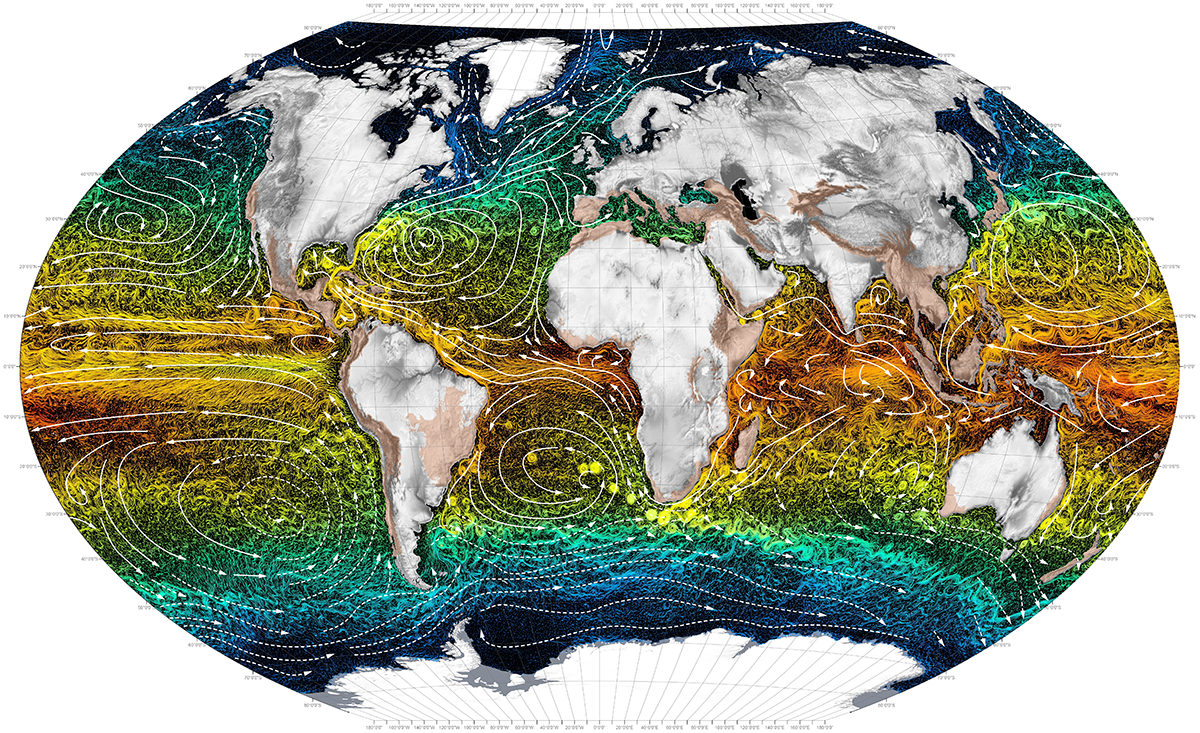Not having control of the rudder module on Europa has really put the Jupiter team in a tough spot. We are completely at the mercy of the sea. For the past month we’ve continued to put our efforts towards recovering Europa, but we’re not there just yet.
In the mean time, we can still learn some things!
Like we mentioned in our last post, when we lost communication to the sub, the rudder automatically set itself in a “right rudder” position. Again, the goal is that it will do circles and stay in the same spot until it can either be fixed or recovered.
The ocean currents, however, have different plans!
If you’ve been following Europa you’ve noticed that it definitely hasn’t stayed in the same place. The currents are very strong out there in the middle of the Pacific Ocean, and even though Europa’s “right rudder” may slow things down, it’s not stopping the inevitable drifting to wherever the sea may take it.
The last 30 days of Europa’s travel, all of which it has been drifting with the ocean currents.
Left: Zoomed in portion of the 30 day picture
Right: Even more zoomed in portion, representing about 2 days of drift
As you can see, Europa is all over the place!
When we look a little closer, you get a really good idea of what’s happening out there. Currents can (and do) change all the time. For example, there might be a strong SW current in a location at noon, and then by 4pm it’s turned into a mild NW current.
Wind is the main contributor to surface ocean currents (the top 100m of the ocean). In the Northern Hemisphere, the winds basically circle in a clockwise motion. From East to West near the equator, and then from West to East up North. This helps to explain why Europa is drifting in a SW direction.
Actually, part of the reason we haven’t been able to recover Europa yet is due to the strong winds in the surrounding area.
If you have a look below, you can see the wind reports at, and around, Europa’s position. Remember, these are satellite projections. Europa is our real-time true report.
And here is a look at the currents (these are interactive widgets, so feel free to zoom and pan around)…
Depending on how much you zoom in, you can see the little areas where the currents just go in circles (aka gyres). In other areas there are just steady streams that basically go in one direction.
Europa has found itself in both of these throughout the last month, but, again, has mostly followed a SW path.
This is a unique, and unintentional, experiment where we get to monitor the ocean currents first hand out in the middle of the Pacific Ocean. It’s pretty cool to compare to these satellite projections and see how accurate they actually are.
Europa’s location, relative to the entire Pacific Ocean.
Well, we are still working to put together a recovery of Europa. Plans are in place, we are just waiting on a good break in the weather to go out an get it.
Our main hopes are that we keep communications to the float, and that it doesn’t get hit by some debris or a boat passing by. We’ve had some close calls, but so far so good!
We will keep you all updated and “current” (pun intended) as to what’s happening, and, as always, feel free to keep an eye on Europa from our HUMPACS page.
Aloha!






